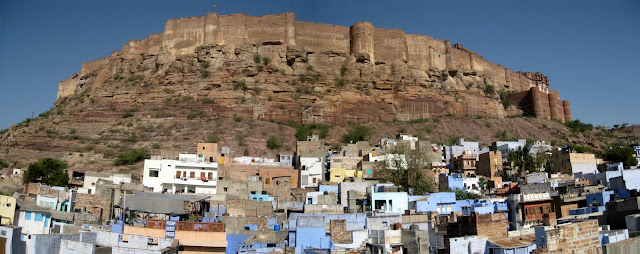Though we didn’t quite know what a camel safari would entail, we had been told we had to do it. So that’s how we found ourselves in the back of a van being driven for miles west of Jaisalmer into the Thor Desert. We were not sure where we were headed exactly, but it appeared that our final destination was just an arbitrary mile marker (rather a kilometer marker), because that is where we met our guide, his young apprentice, and our camels.
I can’t remember when or if I have ever hung out with camels before, but they are pretty funny looking things. Their facial expression reads a combination of curiosity and ambivalence mixed with annoyance, and they audibly chew their cud at all times. Not exactly cute and fuzzy, but somehow kind of endearing.
Regardless, we were excited about our adventure. Ted’s camel’s name was Mr. Rocket while I was on Johnny Walker. Getting on the camel is no problem as they are kneeled on the ground, but when they need to get up, you’d better be holding on and leaning back or you will surely fall off. We made it up incident free, thank goodness. We were led by our guide and our little helper, who was no more than 12, was pulling up the rear.
As we set off into the desert, there were still signs of civilization for the first half day, but as we continued west, it was just us and the sand. After a couple hours of camel riding, we thankfully took a several hour lunch break. Between the heat of the day and the need to stretch our legs and rest our bums after riding a relatively uncomfortable camel, we were happy to relax and nap.
A couple more hours into the desert and scenery changed completely – rolling sand dunes as far as the eye could see. It was an incredible place to watch the sunset while our guide prepared curry and fresh chapatis for dinner. We slept under the stars on the dunes – no tents or pillows for us, just a simple mat on the sand. We were only a few short miles from the Pakistan border and from where we camped, we could see the glow of the giant spotlights the Indians use to patrol the boundary.
The second day we headed back in a different direction to an equally arbitrary finish point as where we started. We’d had a good couple days on our camels, but I’d be lying to you if I didn’t say that we were ready to be done. With super sore bums, a hot shower and a proper sand-free sleep were in order!


